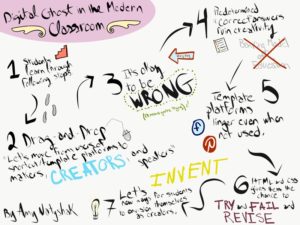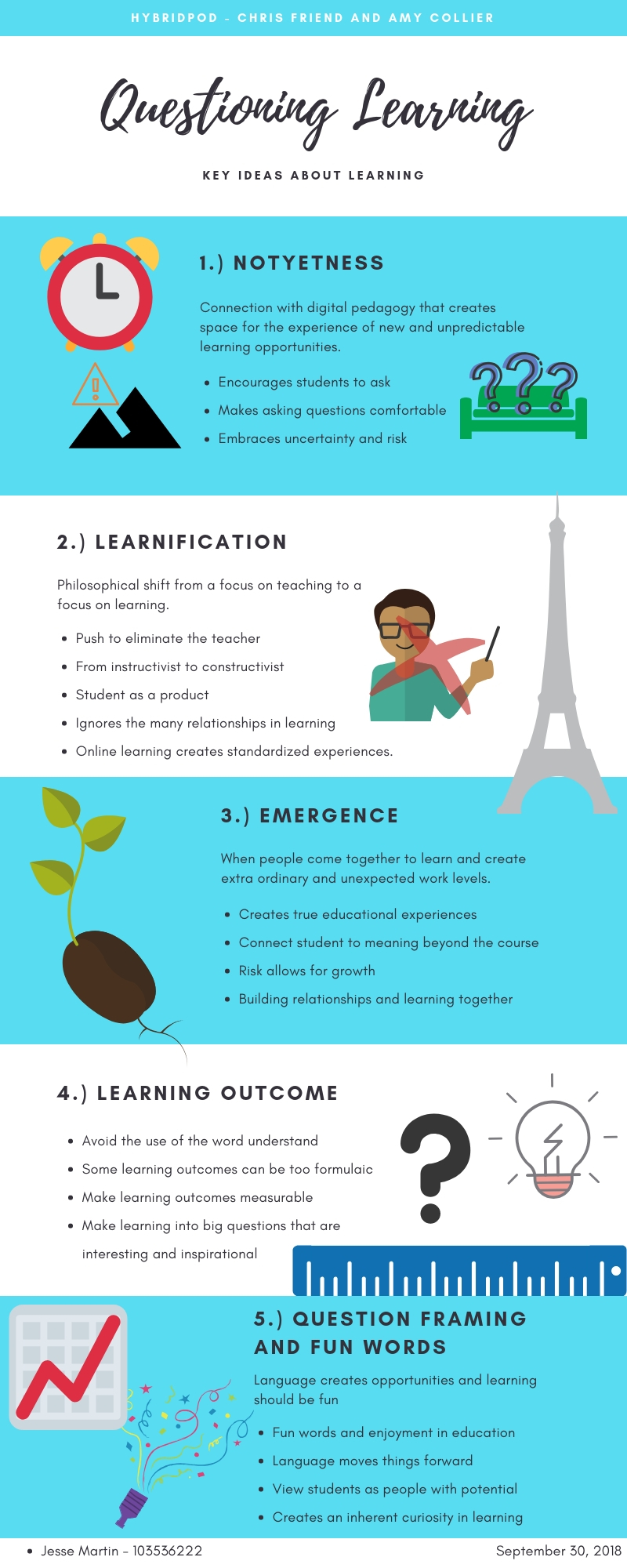The article, “Digital Ghosts in the Modern Classroom” by Ashley Hinck, some incredible points about expanding students horizons when it comes to digital technology were made. There are various template programs out there for just about any sort of digital making that are fairly simple to use. I believe that these can be detrimental when trying to have students create their proper technological identity! They are not seen as the “creator” when using template programs. Though, time and time again students quickly turn to these pre-made templates because they are trying to find the easiest way that is within their comfort zone! This is not a good situation as they only scratch the surface of what is possible. This is why I am asking you, ARE YOU UNCOMFORTABLE YET? One of the problems with our modern education is that we need to create more open and broad lessons and assignments so that students are forced to step out of their comfort zone. Enough of the “worksheet” type of work!
I think that as a new teacher it is imperative I learn how to not only step out of my comfort zone when it comes to technology, but as well as help my students’ step out of their own comfort zones! Technology is a great tool I look forward to using when it comes to teaching Geography. This will aid in showing visuals and using different tools, websites, and applications to get different perspectives on Canadian and international Geography! The idea that you are creating programs from the bare bones and you will be frustrated will be an important concept to teach my students when it comes to Geographic Information Systems (GIS). This is a new computer program they will need to learn how to use (and is very frustrating to learn!) – I have experience with this!
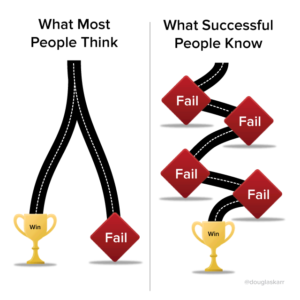
The idea that there is always a right and wrong answer is what fails us in trying to teach our students about creation with digital media. This is what causes the majority of people to feel uncomfortable, vulnerable and incredibly frustrated. I believe we need to encourage students to feel uncomfortable and vulnerable when it comes to creating digital media by not allowing the use of these template programs as a creative crutch! Digital media should be giving everyone creative freedom.
By not using pre-made templates I am allowing students to become more critical thinkers, expand their creativity, and become masters of their own thought! They are learning to create a program from the bare bones that can also be used as a platform of expression! Although these platforms have many benefits, in a society that is becoming ever more digital and technological, we need to help our students become more digitally literate. This allows the students to look past the idea of having just “one right answer” or “one right way to do something.” This also teaches them how to properly participate in a healthy and collaborative online group discussion. Through complete authenticity, we are able to connect to a massive network of people and share our ideas, beliefs, thoughts, and values.
It is time to embrace the uncomfortable so we can expand our creativity and digital literacies by STOPPING the use of pre-made templates. Teachers and students alike, it is time to change our pedagogies, how we are taught and how we learn! I believe practice makes perfect and it is time we start making changes (and mistakes) by stepping out of our comfort zones! IT IS TIME TO GET UNCOMFORTABLE!
LEGEND:
Purple – how are you teaching
Red – the implications and the benefits of using pre-made template programs
Green – the implications and benefits of creating templates and programs from the bare bones
Orange – how being uncomfortable and failure leads to success
Memes were used to help relate to the students as they are viral and all students have seen them/can relate to them!
Click on the link below to see the full Coggle mind map!
HOW_TO_EDUCATE_STUDENTS_IN_DIGITAL_TECHNOLOGIES
-Lexi
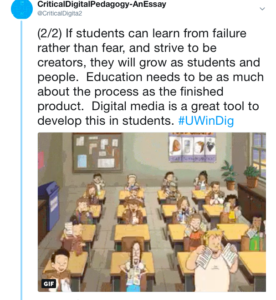
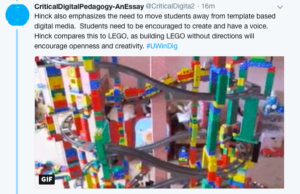


 This expands upon the way that students use technology; they stick to what they know, limit themselves creatively with the shortcut/template options and hope and pray they followed the right steps to avoid failure. Yes, it is possible to have some imagination when it comes to these predetermined templates, but students still have to ensure that their creativity fits. It is unfortunate that these applications and technologies are programmed this way because it limits innovation, creativity and openness for students. Hinck concludes with ways in which we as educators can make the transition from the step-by-step linear instruction to a more open-ended, discovery-based way to implement technology in the classroom, and ultimately learning in general. If we give students the opportunity to try, fail, revise and succeed, students will be better equipped to become makers, creators and critical thinkers.
This expands upon the way that students use technology; they stick to what they know, limit themselves creatively with the shortcut/template options and hope and pray they followed the right steps to avoid failure. Yes, it is possible to have some imagination when it comes to these predetermined templates, but students still have to ensure that their creativity fits. It is unfortunate that these applications and technologies are programmed this way because it limits innovation, creativity and openness for students. Hinck concludes with ways in which we as educators can make the transition from the step-by-step linear instruction to a more open-ended, discovery-based way to implement technology in the classroom, and ultimately learning in general. If we give students the opportunity to try, fail, revise and succeed, students will be better equipped to become makers, creators and critical thinkers.
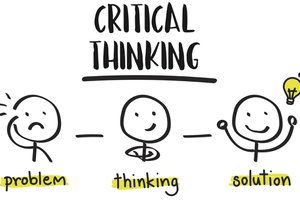
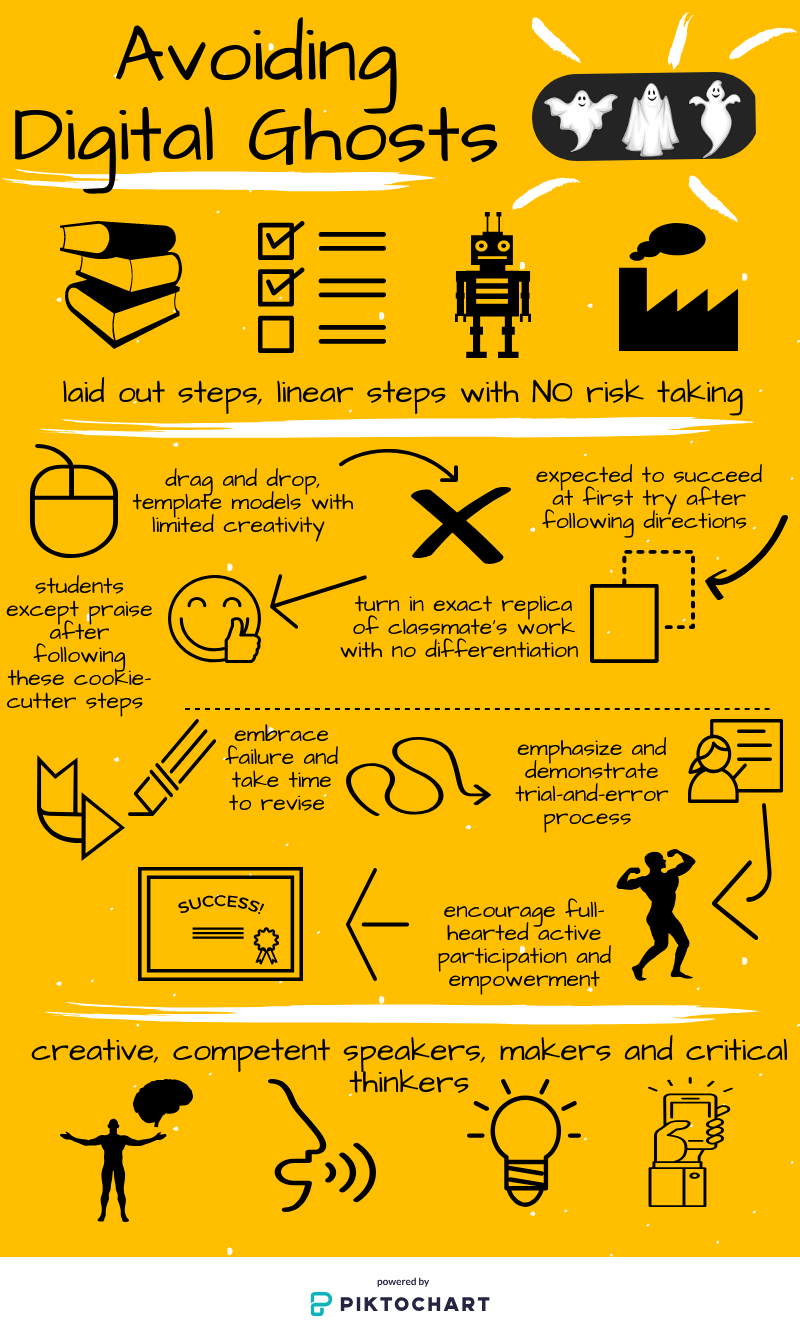
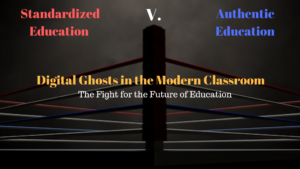


 within the selected template. These learning apps and platforms invite students to follow the directions, get the right answer, turn it in, and get praise. Although many teachers will claim to be moving towards a more authentic way of educating children, either purposely or without knowing these websites and platforms used by teachers reflect the old way of teaching and learning, which views students as containers to be filled with the right answers by teachers. Unfortunately even when these platforms and websites are absent from classrooms they are still affecting student learning, instead we as educators need to help our students move away from users of shortcut/template platforms to makers, creators and critical thinkers.
within the selected template. These learning apps and platforms invite students to follow the directions, get the right answer, turn it in, and get praise. Although many teachers will claim to be moving towards a more authentic way of educating children, either purposely or without knowing these websites and platforms used by teachers reflect the old way of teaching and learning, which views students as containers to be filled with the right answers by teachers. Unfortunately even when these platforms and websites are absent from classrooms they are still affecting student learning, instead we as educators need to help our students move away from users of shortcut/template platforms to makers, creators and critical thinkers.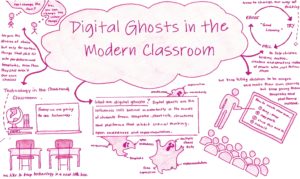 dium for my response because after exploring a few of the other options I was a little intimidated by needing to create something digitally. Additionally, after reading the article which spoke about online platforms limiting creative freedom I felt as though this medium just made sense because it would allow me to get my genuine untouched thoughts across. If I were to use this medium again for a similar purpose I would spend more time brainstorming and planning my Sketchnote before getting started.
dium for my response because after exploring a few of the other options I was a little intimidated by needing to create something digitally. Additionally, after reading the article which spoke about online platforms limiting creative freedom I felt as though this medium just made sense because it would allow me to get my genuine untouched thoughts across. If I were to use this medium again for a similar purpose I would spend more time brainstorming and planning my Sketchnote before getting started.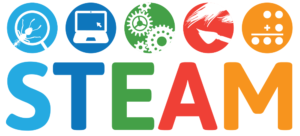 M is about incorporating the arts into math, science and technology but by using these shortcut/template websites and platforms we are limiting the range of creative freedom for students trying to create when using technology. Secondly, I think that we need to give students the tools to critically reflect on these platforms on their own. By teaching our students to think critically and analytically they can start finding these digital ghosts themselves and find alternative ways to create digitally that allow them to use all of their own authentic ideas.
M is about incorporating the arts into math, science and technology but by using these shortcut/template websites and platforms we are limiting the range of creative freedom for students trying to create when using technology. Secondly, I think that we need to give students the tools to critically reflect on these platforms on their own. By teaching our students to think critically and analytically they can start finding these digital ghosts themselves and find alternative ways to create digitally that allow them to use all of their own authentic ideas.